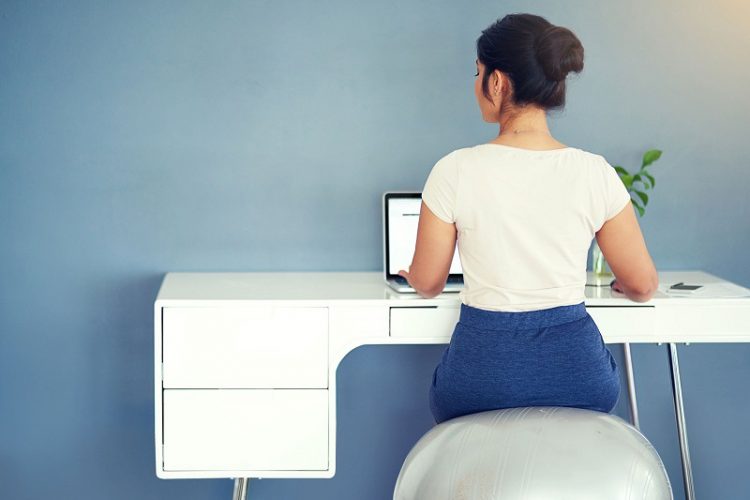
Good posture, for any job

Bend down…but watch your back!
How many times have you heard about bending your knees when you lift? It’s true that bending your knees is important, especially when it involves lifting something – no matter how light. But why? A lack of support from the legs during this movement will overload your back, affecting the vertebrae, muscles, and adjacent nerves, including the sciatic nerve. Often, people repeat these movements a lot.
Thigh muscles (glutes, quads and hamstrings) are known to be strong and powerful. As such, they’re ideal for lifting loads over many repetitions. The stabilizing muscles of your back, on the other hand, should be used for endurance. They let you maintain a steady posture and aren’t designed for movement, let alone lifting! Everything’s a matter of physics: by not bending the knees, our body’s center of gravity shifts. The force of gravity is added to the weight of the load being lifted, greatly increasing stress on the spine.
Trades that involve a lot of load handling are more at risk. However, there are strategies to help you avoid sudden, excessive or asymmetric movements.
Neck, head, and shoulder aches…sitting has now become the professional standard.
Sitting in front of the computer has become ubiquitous in the era of technology. Indeed, statistics show that a growing number of workstations almost exclusively involve sitting in front of a screen. Although it seems harmless, prolonged sitting comes with its share of discomfort and injury. As such, it’s essential to set up one’s workstation appropriately. Proper screen height and orientation promotes a neutral position of the head and neck. Support is also needed for the forearms to avoid overload, which can cause muscular tensions to the shoulders, shoulder blades and neck. The back must also be supported, to maintain an ideal resting position.
Ask your physiotherapist about work-related pains. He or she will refer you to an occupational therapist (as needed) to evaluate and properly adjust your position.
Here are some simple adjustments recommended by CNESST
Standing all day on a hard surface: sore feet! And there’s more…
Many jobs require standing for several hours on a hard surface (like concrete or asphalt). This sometimes involves extra preparation, like steel cap boots. Indeed, this position affects the feet first, where discomfort and pain can be felt. Beyond the feet, standing also involves the knees and menisci, hips and back. These bearing joints (which support our weight) help us move. Standing in a static position with little movement can be exhausting and lead to compensation, since it requires prolonged muscle contraction.
To unburden these joints, it’s important to maintain good posture in your legs and torso. Healthy stabilizing muscles (link to video exercises) will help: their contraction is weak, but sustainable. Vary the work positions according to your needs to avoid overload. Finally, make sure you have good shoes.
Twisting your back? Yes, but it’s going faster!
To save time, we sometimes work in torsion movements. However, torsional/rotational mobility is quite restricted compared to bending (leaning). The muscles that initiate rotation are small and have low stamina. During torsion movements, an asymmetric (left/right) force is created in the spine. The load is thus heavier on one side than the other. At the same time, the space where the nerve passes between each vertebra is reduced.
Considering these factors, it’s easy to see how a trivial twist can result in serious injury!
That’s why it’s recommended to work in front of you whenever possible. This means turning the body completely to face our work, whether we’re carrying a load or not.


